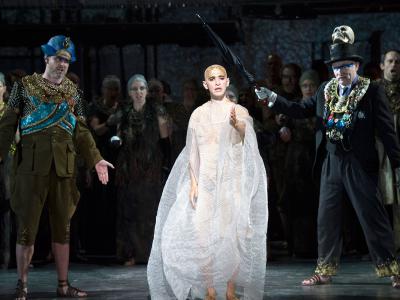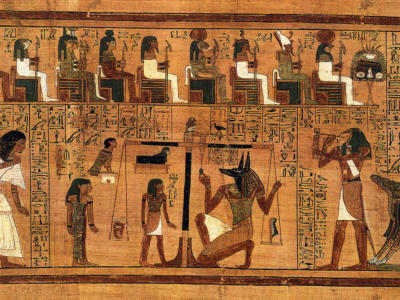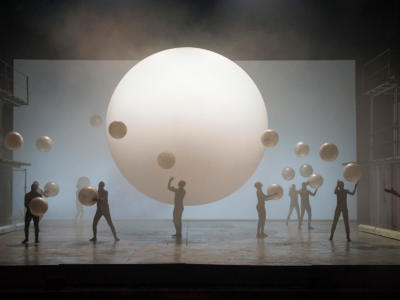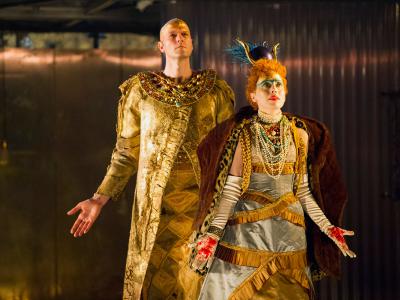Explore Akhnaten: The Opera
Akhnaten is the last in a trilogy of ‘portrait’ operas by Philip Glass, focusing on three individuals who changed the course of history through the power of their ideas. The first, Einstein on the Beach (1976), is about the mathematician–physicist Albert Einstein. Satyagraha (1979) focuses on Gandhi’s non-violent protest movement, and Akhnaten (1983) is about the life and religious convictions of the Egyptian Pharaoh Akhenaten.
The work is structured as a series of tableaux over three acts, representing the rise, reign and fall of Akhnaten. Though based on fragments of known facts, with characters drawn from known persons in history, the scenes are imaginary.
Video
The Text
The libretto was written by Philip Glass in association with Shalom Goldman, Robert Israel and Richard Riddell. The text is derived from original sources and is sung in original languages. The Egyptian texts are taken from the Book of the Dead, from a poem by Akhnaten himself, and from extracts of proclamations and letters contemporary with the Pharaoh’s reign. Other sections are in Babylonian Akkadian and Biblical Hebrew.
Akhnaten’s ‘Hymn to the Sun’ is sung in English. The words of the narrator, who represents both Scribe and twentieth-century tour guide, are performed in English. At the opera’s conclusion, a ‘found text’ reinforces the opera’s sense of distance and ambiguity by reducing the great world-changer and his family to ghosts wandering through the ruins of their lost world.
The Book of the Dead was a collection of spells and illustrations written on a papyrus roll. The papyrus roll was put inside a hollow statue, or sometimes wrapped within the mummy wrappings, and placed in the tomb with all the other things which the dead person would need for the afterlife. The spells and illustrations were intended to give the dead the knowledge and power they needed to journey safely through the dangers of the netherworld and achieve eternal life in the afterlife.
In Act 1 Scene 1 of the Akhnaten opera, the funeral of Amenhotep III, the chorus sings a passage from the Book of the Dead (The words are written phonetically in the score to assist pronunciation):
Ankh ankh, en mitak
Yuk er heh, en heh
ahau en heh
Live life, thou shalt not die
Thou shalt live for millions of millions of years
For millions of millions of years
The Music
One of the most influential contemporary composers, Philip Glass (b. 1937) describes himself as a composer of ‘music with repetitive structures’. In the 1960s he studied in Paris with the influential French teacher Nadia Boulanger, learning a technical mastery of composition skills in the style of the Second Viennese School, but his style is heavily influenced by diverse musical sources, from Indian music to jazz improvisation.
Glass has a prolific body of work including symphonies, concertos, operas, songs, chamber music and notably film scores. Although he dislikes the term, Glass is often classified by music critics as a ‘minimalist’ composer, referencing his musical style which builds up small melodic and rhythmic patterns to form a rich aural tapestry. In Glass’s musical world, the listener should not expect typical Western musical ‘events’ such as sudden climaxes; instead, the listener is immersed in textures that surround and develop.
Akhnaten is written for for 12 solo voices, chorus and a spoken narrator. It is less obviously ‘operatic’ than Glass’s previous operas such as Satyagraha as it includes extended orchestral interludes and much spoken text. The orchestration is sparse and does not include violinsm using a high level of dissonance as in Akhnaten’s sung ‘Hymn’.
The character of Akhnaten is distinctly characterised throughout the opera as a solo trumpet always accompanies his singing. This marks the figure out as unconventional and reflects his different spirituality and distance from both his fellow Egyptians and a modern audience.
Act 1 Scene 1: Funeral of Amenhotep III
From the Album: A Nonesuch Retrospective, Philip Glass, Nonesuch Records Inc, 2008
Video
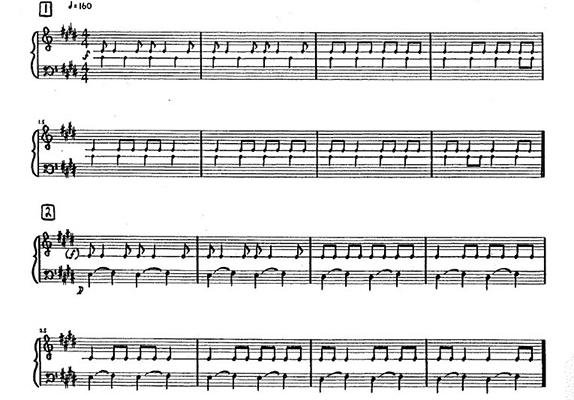
Act 1 Scene 1: Funeral of Amenhotep III, Vocal Score (Dunvagen, 1983)

